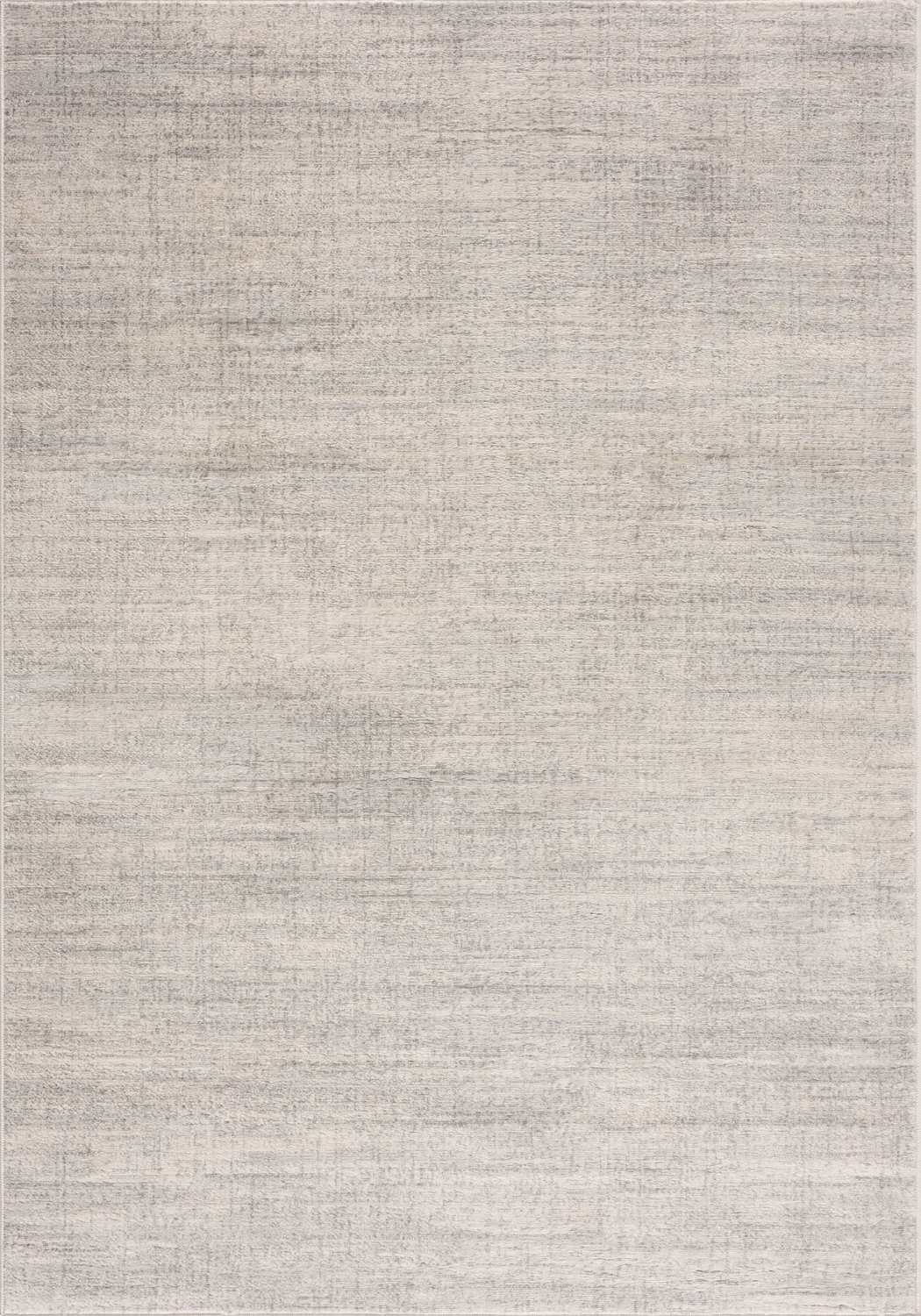How To Remove Carpet Moths? Effective Solutions | Expert Guide

Carpet moths can wreak havoc on your cherished rugs, carpets, and other textile items in your home. These tiny yet destructive pests have the potential to cause significant damage if left unchecked. In this comprehensive guide, we'll explore effective strategies to identify, eliminate, and prevent carpet moth infestations, ensuring your home remains free from these unwelcome visitors.
Understanding Carpet Moths
Carpet moths, scientifically known as Trichophaga tapetzella, belong to the Tineidae family. These small insects are found worldwide and pose a significant threat to natural fibres in homes. To effectively combat these pests, it's crucial to understand their behaviour and life cycle.
Characteristics of Carpet Moths
Carpet moths are relatively small, measuring about 14-18 mm in wingspan. They typically have light-coloured heads and brown or grey bodies. Unlike many other moth species, carpet moths are not attracted to light and prefer dark, undisturbed areas of your home.
Life Cycle and Behavior
The life cycle of carpet moths consists of four stages: egg, larva, pupa, and adult. Adult females lay eggs in secluded areas near potential food sources. Once hatched, the larvae begin feeding on natural fibres, causing the majority of the damage associated with these pests.
Preferred Habitats
Carpet moths thrive in dark, undisturbed areas of your home. They are commonly found in:
-
Corners of rooms
-
Under furniture
-
Along baseboards
-
In closets and storage areas
-
Behind curtains
Understanding these preferred habitats is crucial for the effective detection and elimination of carpet moths.
Identifying a Carpet Moth Infestation
Early detection of a carpet moth infestation is key to minimizing damage and facilitating easier removal.
Some telltale signs to watch out for:
Visual Indicators
-
Adult moths fluttering in dark corners or along walls
-
Small, cream-coloured larvae crawling on carpets or rugs
-
Silken tubes or cases left behind by case-bearing moth larvae
-
Bare patches or threadbare areas on carpets, especially in less-trafficked areas
Damage Patterns
Carpet moth damage often appears as:
-
Irregular holes in thinner textiles
-
Reduced pile in carpets
-
Threadbare patches in severe cases
Using Moth Traps
Pheromone-based moth traps can be an effective tool for detecting and monitoring carpet moth populations. These traps attract male moths, helping you assess the severity of the infestation and track the effectiveness of your elimination efforts.
Preparing for Carpet Moth Removal
Before diving into the removal process, it's essential to prepare your space properly. This preparation will enhance the effectiveness of your efforts and help prevent reinfestation.
Clearing the Area
Remove all furniture and items from the affected areas. This step allows for thorough inspection and treatment of the entire space.
Isolating Infested Items
Identify and isolate any infested items to prevent the spread of moths to other areas of your home. Consider using sealed plastic bags or containers for this purpose.
Gathering Necessary Supplies
Collect the following items:
-
A vacuum cleaner with attachments
-
Cleaning solutions (vinegar, soap, etc.)
-
Protective gear (gloves, mask)
-
Natural or chemical moth treatments
-
Airtight storage containers
Having these supplies on hand will streamline the removal process and ensure you're well-equipped to tackle the infestation.
Cleaning and Vacuuming Techniques
Thorough cleaning is a crucial step in eliminating carpet moths and their larvae. Follow these techniques for optimal results:
Vacuuming Strategies
-
Use a powerful vacuum cleaner with various attachments
-
Pay extra attention to corners, edges, and underfurniture
-
Vacuum both sides of area rugs and carpets
-
Empty the vacuum contents into a sealed bag and dispose of it outside immediately
Deep Cleaning Methods
For a more thorough clean:
-
Use a carpet shampooer or steam cleaner on affected areas
-
Consider professional carpet cleaning services for severe infestations
-
Wash removable fabric items in hot water (at least 120°F) to kill eggs and larvae
Natural Cleaning Solutions
Combine equal amounts of water and white vinegar to form a solution. This solution can be effective in killing moth eggs and larvae while also removing lingering pheromones that might attract more moths.
Natural Remedies for Carpet Moth Control
If you prefer eco-friendly options, several natural remedies can help control carpet moths:
Essential Oils
Certain essential oils have moth-repelling properties:
-
Lavender
-
Peppermint
-
Eucalyptus
-
Cedar
Mix a few drops of these oils with water in a spray bottle and apply to affected areas.
Herbal Sachets
Create sachets filled with dried herbs known to repel moths:
-
Rosemary
-
Thyme
-
Cloves
-
Bay leaves
Place these sachets in closets, drawers, and other potential moth habitats.
Diatomaceous Earth
This natural, non-toxic substance can be effective against carpet moths:
-
Sprinkle a thin layer on carpets and along baseboards
-
Leave for at least 24 hours before vacuuming
-
Reapply as needed
Remember to use food-grade diatomaceous earth and wear a mask when applying to avoid inhaling the fine powder.
Chemical Treatments for Severe Infestations
When dealing with extensive pest problems, the application of pesticides or other chemical solutions might be required. Always follow manufacturer instructions and safety precautions when using these products.
Moth Sprays
Various moth-specific sprays are available that can be applied directly to carpets and other affected areas. Look for products containing permethrin or deltamethrin for effective results.
Foggers
Moth foggers or "bug bombs" can be used to treat entire rooms or large areas. However, these should be used with caution and as a last resort due to their potential health and environmental impacts.
Professional Pest Control
For extensive infestations or if DIY methods prove ineffective, consider hiring a professional pest control service. They have access to more potent treatments and can provide a comprehensive approach to eliminating carpet moths.
Treating Infested Fabrics and Textiles
Carpet moths don't limit their damage to just carpets. Here's how to treat other infested fabrics and textiles:
Washing and Drying
-
Wash infested items in hot water (at least 120°F)
-
Dry on high heat for at least 30 minutes
-
For delicate items, consider dry cleaning
Freezing Method
For items that can't be washed:
-
Seal the item in a plastic bag
-
Place in the freezer for at least 24 hours
-
Remove and shake out thoroughly
Steam Treatment
Use a handheld steamer on upholstered furniture, curtains, and other fabric items that can't be easily washed or frozen.
Preventing Future Carpet Moth Infestations
Once you've successfully eliminated carpet moths, take these steps to prevent future infestations:
Regular Cleaning Routine
-
Vacuum carpets and rugs at least twice a week
-
Pay special attention to dark corners and under-furniture
-
Periodically move furniture to clean underneath
Proper Storage of Textiles
-
Store seasonal clothing and textiles in airtight containers
-
Use cedar blocks or lavender sachets in storage areas
-
Regularly inspect stored items for signs of moth activity
Environmental Control
-
Maintain low humidity levels in your home
-
Ensure good ventilation in closets and storage areas
-
Minimize clutter to reduce potential hiding spots for moths
Repairing Carpet Moth Damage
After eliminating the infestation, you may need to address the damage left behind:
Assessing the Damage
Carefully inspect affected carpets and rugs to determine the extent of the damage.
DIY Repair Methods
For minor damage:
-
Trim loose fibres
-
Use a carpet brush to blend the surrounding fibres
-
Consider using carpet patches for small holes
Professional Restoration
For extensive damage, consult a professional carpet repair service. They can:
-
Reweave damaged areas
-
Replace sections of carpet
-
Provide advice on whether replacement is necessary
Long-Term Monitoring and Maintenance
Ongoing vigilance is key to preventing future carpet moth problems:
Regular Inspections
-
Check carpets, rugs, and other textiles monthly for signs of moth activity
-
Pay special attention to dark, undisturbed areas
Using Moth Traps
Continue to use pheromone traps to monitor for any resurgence of moth activity.
Seasonal Deep Cleaning
Perform a thorough deep clean of your home, including carpets and upholstery, at least twice a year.
When to Seek Professional Help
While many carpet moth infestations can be handled with DIY methods, there are times when professional intervention may be necessary:
Signs You Need a Pro
Consider professional help if:
-
The infestation persists despite your best efforts
-
You have valuable or antique carpets and textiles
-
The infestation has spread to multiple rooms or areas
Choosing a Pest Control Service
When selecting a professional:
-
Look for companies specializing in textile pests
-
Check for proper licensing and insurance
-
Ask about their treatment methods and guarantees
Working with Professionals
To get the most out of professional services:
-
Prepare your home as instructed
-
Follow all post-treatment recommendations
-
Schedule follow-up inspections as advised
By following these comprehensive steps, you can effectively remove carpet moths from your home and prevent future infestations. Remember, early detection and prompt action are key to minimizing damage and ensuring your carpets and textiles remain in pristine condition.

How do you get rid of carpet bugs?
Getting rid of carpet bugs, also known as carpet beetles, requires a multi-step approach:
-
Identify the infestation: Look for small, oval-shaped beetles or their larvae in carpets, furniture, and clothing.
-
Thorough cleaning: Vacuum all carpets, upholstery, and fabric surfaces regularly. Pay special attention to corners and hidden areas.
-
Steam cleaning: Use a steam cleaner on carpets and upholstery to kill bugs and larvae with high heat.
-
Wash fabrics: Clean all potentially infested fabrics in hot water (at least 120°F) to eliminate bugs and eggs.
-
Use insecticides: Apply carpet beetle-specific insecticides or boric acid powder in affected areas, following product instructions carefully.
-
Natural repellents: Consider using cedar oil or mothballs as deterrents in closets and storage areas.
-
Seal entry points: Close off cracks and crevices in walls, floors, and windows to prevent future infestations.
-
Professional treatment: For severe infestations, consult a pest control professional for targeted therapy.
-
Preventive measures: Regularly inspect and clean areas prone to infestation, such as closets and storage spaces.
-
Remove food sources: Store wool, fur, and other natural fibres in airtight containers to deny carpet bugs access to food.
By following these steps consistently, you can effectively eliminate carpet bugs and prevent future infestations in your home.
Why do I have carpet beetles?
Carpet beetles often infest homes due to:
-
Easy access through open doors, windows, or cracks
-
Attraction to natural fibres in carpets, furniture, and clothing
-
The presence of food sources like pet hair, dead insects, or plant debris
-
Warm, humid environments that support their growth
-
Unnoticed introduction via secondhand items or cut flowers
Regular cleaning, proper storage of fabrics, and sealing entry points can help prevent carpet beetle infestations.
Why do I have carpet beetles?
Carpet beetles can invade your home for several reasons:
- Food sources: These pests are attracted to natural fibres like wool, silk, and cotton, which are common in carpets, upholstery, and clothing.
- Entry points: They can enter through small cracks, open windows, or doors, often hitching a ride on flowers or plants.
- Favorable conditions: Warm, dark, and undisturbed areas in your home provide ideal breeding grounds for carpet beetles.
- Poor housekeeping: Infrequent vacuuming or cleaning can allow carpet beetle larvae to thrive on accumulated dust, hair, and debris.
- Outdoor nests: Birds' nests or animal carcasses near your home can harbour carpet beetles, which may then move indoors.
- Second-hand items: Introducing infested furniture, rugs, or clothing can bring carpet beetles into your home.
- Moisture issues: Damp areas in your house can attract carpet beetles seeking hydration.
- To prevent carpet beetle infestations, maintain regular cleaning routines, seal entry points, and store natural fibre items properly. If you suspect an infestation, consider consulting a pest control professional for effective treatment options.
Signs of carpet beetles
• Small, round beetles on carpets or furniture
• Shed larval skins• Irregular holes in fabrics
• Fecal pellets resembling fine sand
Are carpet beetles harmful?
While not directly harmful to humans, carpet beetles can cause significant damage to fabrics and organic materials. They may trigger allergies in some people but don't transmit diseases.
Why do I have carpet beetles in my bedroom?
Carpet beetles enter bedrooms seeking:
• Natural fibres in carpets and clothing
• Dead insects or pet hair
• Food debris often enters through open windows or on infested items.
How to get rid of carpet beetle larvae?
• Vacuum thoroughly and frequently
• Wash or dry clean infested fabrics
• Use diatomaceous earth in affected areas
• Apply boric acid powder to carpets
• Consider professional pest control for severe infestations
Do carpet beetles bite?
No, carpet beetles do not bite humans. However, their bristly larvae can cause skin irritation, often mistaken for bites. This reaction is called carpet beetle dermatitis.
How to get rid of carpet beetles UK?
• Inspect and clean regularly
• Use pheromone traps to monitor infestation
• Apply insecticide sprays labelled for carpet beetles
• Seal entry points around windows and doors
• Consider professional pest control services
How to get rid of carpet beetles naturally?
• Vacuum frequently, including hidden areas
• Use cedar products as a natural repellent
• Apply diatomaceous earth to affected areas
• Wash fabrics in hot water (60°C or higher)
• Use vinegar solution for cleaning surfaces
How to remove moths from carpet?
• Vacuum thoroughly and frequently
• Use pheromone traps to catch adult moths
• Apply cedar oil or lavender as natural repellents
• Freeze small items to kill eggs and larvae
• Consider professional steam cleaning
Carpet moth UK how to remove naturally?
• Vacuum intensively, including dark corners
• Use natural repellents like lavender or cedar
• Sunlight exposure for infested items when possible
• Apply diatomaceous earth to affected areas
• Regular inspection and cleaning of vulnerable areas
How to remove moth eggs from the carpet?
• Vacuum thoroughly, focusing on dark areas
• Use a stiff brush to dislodge eggs before vacuuming
• Apply steam cleaning to kill eggs
• Freeze small carpets or rugs for 24 hours
• Consider professional carpet cleaning services
How to remove moths from woollen carpet?
• Vacuum intensively and frequently
• Use moth traps with pheromones
• Apply natural repellents like cedar or lavender
• Dry clean or wash in hot water if possible
• Consider professional pest control for severe cases
How to treat floorboards after moth infested carpet is removed?
• Thoroughly clean and vacuum floorboards
• Apply boric acid powder to cracks and crevices
• Use a residual insecticide specifically for moths
• Seal any gaps or cracks in the floorboards
• Monitor the area with pheromone traps
Moths in the carpet how to remove?
• Identify the type of moth for targeted treatment
• Vacuum extensively, including hidden areas
• Use moth traps with pheromones
• Apply natural or chemical insecticides• Clean and store vulnerable items properly
• Consider professional pest control for persistent infestations
FAQ
Why am I getting carpet bugs?
Carpet bugs, or carpet beetles, are attracted to:
• Natural fibres in carpets, clothing, and furniture
• Food sources like crumbs and dead insects
• Dark, undisturbed areas in your home
• Open windows or doors, allowing easy entry
Does vinegar kill carpet beetles?
While not instantly lethal, vinegar can be effective:
• Deters carpet beetles due to its strong smell
• Damages exoskeletons of larvae on contact
• Disrupts breeding cycles when used regularly
• Most effective when combined with thorough cleaning
What is the best bug killer for carpet beetles?
Effective carpet beetle killers include:
• Diatomaceous earth - natural and long-lasting
• Boric acid - toxic to beetles but low toxicity to humans
• Pyrethrin-based sprays - fast-acting on contact
• Growth regulators - disrupt the beetle life cycle
Do all houses have carpet beetles?
Not all houses have carpet beetles, but they're common:
• Found worldwide in various climates
• More prevalent in older homes or those with natural fibres
• Can infest clean homes too, not just dirty ones
• Often go unnoticed until the damage is visible
How do I permanently get rid of carpet bugs?
Permanent elimination requires a multi-step approach:
• Thorough vacuuming of all surfaces
• Steam cleaning carpets and upholstery
• Washing or dry cleaning infested fabrics
• Sealing entry points like cracks and crevices
• Regular inspections to prevent re-infestation
How long do carpet bugs last?
Carpet beetle lifespan varies:
• Eggs: 7-14 days to hatch
• Larvae: 3-36 months (destructive stage)
• Pupae: 1-3 weeks
• Adults: 2-6 weeks, but can live up to a year
What smell do carpet beetles hate?
Carpet beetles are repelled by several scents:
• Cedar oil or wood
• Lavender• Peppermint• Clove• Vinegar
Does baking soda kill carpet beetles?
Baking soda's effectiveness is limited:
• Not directly lethal to carpet beetles
• Can deter beetles due to its abrasive nature
• Absorbs moisture, making the environment less appealing
• Best used as part of a comprehensive cleaning routine
Does washing kill carpet beetle eggs?
Washing can be effective against carpet beetle eggs:
• Hot water (60°C or higher) kills eggs
• Detergents help dislodge and remove eggs
• Agitation during washing physically destroys eggs
• Dryer heat provides additional egg-killing action
Can carpet bugs make you ill?
Carpet beetles rarely cause direct illness, but:
• Larval hairs can cause skin irritation or allergic reactions
• Prolonged exposure may lead to respiratory issues
• Psychological distress from infestation is common
• No known disease transmission to humans
What is the most common carpet bug?
The most common carpet beetles include:
• Varied carpet beetle (Anthrenus verbasci)
• Black carpet beetle (Attagenus unicolor)
• Furniture carpet beetle (Anthrenus flavipes)
• Common carpet beetle (Anthrenus scrophulariae)
How to tell the difference between carpet beetles and bed bugs?
Key differences include:
• Size: Carpet beetles are smaller (1-4mm vs 5-7mm for bed bugs)
• Shape: Carpet beetles are oval, bed bugs are flat and oval
• Color: Carpet beetles often have patterns, bed bugs are reddish-brown
• Behavior: Carpet beetles don't feed on blood, bed bugs do
What is the best deterrent for carpet beetles?
Effective deterrents include:
• Cedar products (oil, blocks, or hangers)
• Lavender sachets or essential oil
• Regular vacuuming and cleaning
• Proper storage of vulnerable items in airtight containers
• Pheromone traps for monitoring and control
Can carpet beetles bite?
Carpet beetles do not bite humans:
• They lack biting mouthparts for human skin
• Larval hairs can cause skin irritation, often mistaken for bites
• This reaction is called carpet beetle dermatitis• Adults feed on pollen, not fabric or human blood
Does vinegar kill bug eggs?
Vinegar's effectiveness on bug eggs varies:
• Not consistently lethal to all types of insect eggs
• Can damage or dislodge some eggs on contact
• Most effective when combined with physical removal
• Regular application may disrupt breeding cycles
What is the best spray for carpet beetles?
Effective sprays for carpet beetles include:
• Pyrethrin-based insecticides for quick knockdown
• Permethrin sprays for residual control
• Essential oil sprays (cedar, lavender) as natural alternatives
• Growth regulator sprays to disrupt the beetle life cycle
Can you get rid of carpet beetles yourself?
DIY carpet beetle control is possible:
• Thorough cleaning and vacuuming
• Washing or dry cleaning infested items
• Using natural repellents like cedar or lavender
• Applying diatomaceous earth to affected areas
• Monitoring with pheromone traps
Does carpet attract more bugs?
Carpets can attract insects:
• Provides shelter and warmth for many pests
• Traps food particles attractive to insects
• Natural fibres are food sources for some bugs
• Moisture retention can create favourable conditions
Can carpet beetles disappear?
Carpet beetles don't typically disappear on their own:
• Populations fluctuate seasonally
• May seem to vanish if food sources are removed
• Can go unnoticed during certain life stages
• Proper treatment is usually necessary for elimination
Does baking soda really kill carpet beetles?
Baking soda's effectiveness is limited:
• Not directly toxic to carpet beetles
• Can deter beetles due to its abrasive texture
• Absorbs moisture and odours, making the area less attractive
• Best used as part of a comprehensive cleaning strategy
Does washing clothes kill carpet beetles?
Washing clothes can be effective:
• Hot water (60°C or higher) kills beetles and eggs
• Agitation during washing physically removes beetles
• Detergents help dislodge and kill beetles
• High heat drying provides additional killing action
Does spraying vinegar kill maggots?
Vinegar can be effective against maggots:
• Direct contact with vinegar can kill maggots
• The acidity disrupts their body functions
• Most effective when combined with physical removal
• Regular application can prevent fly breeding
What's the difference between carpet bugs and bed bugs?
Key differences include:
• Diet: Carpet beetles eat fabrics, bed bugs feed on blood
• Appearance: Carpet beetles are round, bed bugs are flat and oval
• Size: Carpet beetles are smaller (1-4mm vs 5-7mm for bed bugs)
• Behavior: Carpet beetles don't bite humans, bed bugs do
How do you kill carpet beetle eggs?
To kill carpet beetle eggs:
• Vacuum thoroughly, including cracks and crevices
• Use steam cleaning on carpets and upholstery
• Wash infested items in hot water (60°C or higher)
• Apply diatomaceous earth to affected areas
• Use insecticides specifically labelled for carpet beetle eggs
Will vinegar kill powder post beetles?
Vinegar's effectiveness on powder post beetles is limited:
• Not a reliable method for killing these beetles
• May deter beetles due to its strong smell
• More effective treatments exist, like borate solutions
• Best used as part of a comprehensive treatment plan
Does salt kill carpet beetles?
Salt is not an effective carpet beetle killer:
• No direct toxic effect on carpet beetles
• May deter beetles in high concentrations
• Can damage fabrics if used excessively
• Better alternatives exist for carpet beetle control
How do you get rid of carpet moths?
To eliminate carpet moths, start with thorough vacuuming of all carpeted areas, including under furniture. Wash or dry clean affected items at high temperatures. Use pheromone traps to catch adult moths and disrupt their breeding cycle. Consider professional pest control for severe infestations. Regular cleaning and vigilance are key to preventing future problems.
Will vacuuming get rid of carpet moths?
Vacuuming alone won't completely eradicate carpet moths, but it's a crucial step in control. It removes eggs, larvae, and adult moths, disrupting their life cycle. Focus on dark, undisturbed areas where moths thrive. Empty the vacuum bag immediately after use to prevent reinfestation. Combine vacuuming with other treatment methods for effective moth control.
What are the first signs of carpet moths?
Early signs of carpet moth infestation include small, bare patches in carpets, especially in dark or hidden areas. Look for silky tubes or cases near the carpet's surface, indicating larvae presence. You might notice small, beige moths flying erratically near floor level, particularly at night. Unexplained holes in woolen items or fur can also indicate moth activity.
What product kills carpet moths?
Effective products for killing carpet moths include pyrethrin-based sprays, which target both adults and larvae. Diatomaceous earth is a natural option that dehydrates moths and larvae. For a more comprehensive approach, consider moth-specific insecticide treatments containing permethrin or deltamethrin. Always follow product instructions carefully and consider professional application for severe infestations.
What smell do carpet moths hate?
Carpet moths are repelled by several scents. They particularly dislike the smell of cedar, lavender, and peppermint. Essential oils of these fragrances can be effective deterrents. Other repellent scents include cloves, thyme, and rosemary. Using sachets or sprays with these scents in closets and storage areas can help keep moths at bay.
How long do carpet moths last?
The lifecycle of carpet moths varies, but typically spans 2 to 3 months from egg to adult. Adult moths live for about 2 to 4 weeks. However, the damaging larval stage can last several months, depending on environmental conditions. Without intervention, infestations can persist indefinitely as generations overlap. Regular monitoring and preventive measures are crucial for long-term control.
Can moths survive in a vacuum bag?
Moths can potentially survive in a vacuum bag, especially in the egg or larval stage. To prevent this, empty the vacuum bag immediately after cleaning infested areas. Dispose of the contents in a sealed plastic bag outside your home. For added precaution, freeze the vacuum bag contents before disposal to ensure all life stages are eliminated.
How do you get rid of carpet moths DIY?
For DIY carpet moth control, start with intensive vacuuming of all carpeted areas. Wash or freeze infested items to kill eggs and larvae. Use natural repellents like cedar or lavender sachets in storage areas. Create vinegar traps by mixing apple cider vinegar, water, and sugar in a bowl with a few drops of dish soap. Regular cleaning and inspection are key to preventing reinfestation.
Do carpet moths fly around?
Adult carpet moths do fly, but their flight pattern is distinctive. They tend to flutter erratically close to the ground, especially near carpeted areas. Unlike other moths, they rarely fly towards light sources. Their flight is most noticeable in the evening or at night. If you observe small, beige moths flying in this manner, it's a strong indicator of a carpet moth infestation.
What is the best moth repellent?
The most effective moth repellents combine multiple strategies. Cedar products are highly effective and natural. Lavender sachets or essential oils offer a pleasant scent while repelling moths. For a more potent solution, moth balls containing paradichlorobenzene are effective but should be used cautiously due to their strong odor. Pheromone traps disrupt breeding cycles and are excellent for monitoring infestations.
Is there a difference between carpet moths and clothes moths?
While similar, carpet moths and clothes moths have distinct characteristics. Carpet moths, or case-bearing clothes moths, create a protective case from carpet fibers. Clothes moths, specifically webbing clothes moths, don't make cases but leave silky webbing. Carpet moths prefer carpets and upholstery, while clothes moths target clothing. Both cause similar damage, but their preferred habitats and appearance slightly differ.
When should I be worried about moths?
Concern about moths is warranted when you notice unexplained holes in fabrics, especially wool or silk. Finding small, beige moths flying near floor level or in closets is a red flag. Bare patches in carpets or furry debris near baseboards indicate active infestation. If you spot even a few moths or signs of damage, take immediate action to prevent a larger problem.
How do I get rid of carpet moths permanently?
Permanent carpet moth elimination requires a multi-faceted approach. Thoroughly clean and vacuum all areas regularly. Use professional-grade insecticides targeting both adults and larvae. Implement preventive measures like cedar products or lavender sachets in storage areas. Consider professional pest control for severe infestations. Maintain vigilance with regular inspections and prompt treatment of any new signs to prevent future infestations.
What do moth eggs look like on clothes?
Moth eggs on clothes are extremely small and difficult to see with the naked eye. They appear as tiny, oval-shaped specks, often clustered in hidden areas of garments. The eggs are usually cream or white in color and may look like grains of salt. They're typically found in dark, undisturbed areas of clothing, such as seams, folds, or pockets.
Does vinegar get rid of carpet moths?
Vinegar can be an effective part of carpet moth control. Create a solution of equal parts water and white vinegar to spray on affected areas. This mixture helps kill larvae and eggs. For added effectiveness, add a few drops of essential oils like lavender or peppermint. While vinegar isn't a complete solution, it's a useful, natural component of a comprehensive moth control strategy.
What is the best killer for carpet moths?
The most effective carpet moth killers target multiple life stages. Pyrethrin-based sprays are highly effective against adults and larvae. For a natural approach, diatomaceous earth works well by dehydrating moths and larvae. Professional-grade insecticides containing permethrin or deltamethrin offer comprehensive control. Combine these with pheromone traps to disrupt breeding cycles for the best results.
What is the best homemade moth killer?
An effective homemade moth killer combines vinegar, water, and essential oils. Mix equal parts white vinegar and water, adding several drops of lavender, peppermint, or eucalyptus oil. Spray this solution on affected areas. Another option is a soap trap: mix dish soap, water, and vinegar in a bowl to attract and drown moths. These homemade solutions work best as part of a broader moth control strategy.
How to stop moths in wardrobe naturally?
To naturally prevent moths in wardrobes, start by thoroughly cleaning all items and the wardrobe itself. Place cedar blocks or hangers in the wardrobe, as moths dislike the scent. Hang lavender or rosemary sachets among clothes. Regularly air out garments in sunlight, as moths prefer dark, undisturbed spaces. Store rarely worn items in airtight containers with natural repellents. Regular inspection and cleaning are key to natural moth prevention.
What to spray to get rid of moths?
For effective moth control, spray a solution of water and essential oils like lavender, peppermint, or eucalyptus. Commercial pyrethrin-based sprays are highly effective against both adult moths and larvae. For a natural approach, a vinegar and water solution can be sprayed in affected areas. In severe cases, consider professional-grade insecticides containing permethrin or deltamethrin, but always follow safety guidelines when using these products.
Can female clothes moths fly?
Female clothes moths can fly, but they do so less frequently than males. Their flight is typically short and erratic, often close to the ground or near potential egg-laying sites. Female moths are more likely to be seen crawling on surfaces, searching for suitable places to lay eggs. Their limited flight behavior is one reason infestations often go unnoticed until significant damage occurs.
What to do after moth treatment?
After moth treatment, thoroughly clean all affected areas, including vacuuming and washing fabrics. Inspect items regularly for signs of new activity. Implement preventive measures like cedar products or lavender sachets in storage areas. Air out treated spaces and items. Continue using pheromone traps to monitor for any remaining or new moths. Maintain a regular cleaning schedule to prevent future infestations.
Does vacuuming get rid of moths?
Vacuuming is an essential part of moth control, but it doesn't completely eradicate them. It effectively removes eggs, larvae, and adult moths from carpets and upholstery. Focus on dark, undisturbed areas where moths thrive. Always empty the vacuum bag immediately after use to prevent reinfestation. While vacuuming alone isn't a complete solution, it's a crucial component of comprehensive moth management.
Should you squish moths?
While squishing moths might seem like a quick solution, it's not the most effective method for control. Squishing adult moths doesn't address the underlying infestation of eggs and larvae. Instead, focus on comprehensive treatment methods like vacuuming, using traps, and applying appropriate insecticides. If you do squish a moth, clean the area thoroughly, as moth remains can attract more pests.
Do ziploc bags keep moths out?
Ziploc bags can be effective in keeping moths out of stored items. Their airtight seal prevents moths from accessing clothes or fabrics. For best results, ensure items are clean and dry before storage. Add cedar chips or lavender sachets inside the bags for extra protection. While effective for short-term storage, for long-term protection, consider more durable airtight containers or garment bags specifically designed for moth prevention.
Why am I getting carpet moths?
Carpet moth infestations often occur due to several factors. Poor housekeeping and infrequent vacuuming create ideal conditions for moths. High humidity and warm temperatures encourage moth breeding. Bringing in second-hand furniture or rugs without inspection can introduce moths. Natural fiber carpets and dark, undisturbed areas are particularly attractive to moths. Regular cleaning, proper storage of woolen items, and maintaining a dry environment can help prevent infestations.
Is there a spray for carpet moths?
Yes, there are several effective sprays for carpet moths. Pyrethrin-based sprays are popular and effective against both adults and larvae. For a natural option, essential oil sprays containing lavender, peppermint, or eucalyptus can repel moths. Professional-grade insecticides containing permethrin or deltamethrin offer comprehensive control. Always follow product instructions carefully and consider professional application for severe infestations.
What kills carpet moth eggs?
To effectively kill carpet moth eggs, several methods can be employed. High heat from steam cleaning or hot water washing is very effective. Freezing infested items for at least 24 hours can also kill eggs. Diatomaceous earth sprinkled on carpets can dehydrate eggs. Professional insecticides specifically formulated for moth control often contain ingredients that target eggs. Regular vacuuming can physically remove eggs before they hatch
Are any carpets moth proof?
While no carpet is entirely moth-proof, some materials offer better resistance. Synthetic fibers like nylon and polyester are less appealing to moths. Wool carpets treated with moth-resistant chemicals provide some protection. For optimal moth-proofing, combine resistant materials with regular cleaning and preventive measures.
What month is moth season?
Moth season typically peaks during the warmer months, from late spring through early fall. However, indoor moths can be active year-round if conditions are favorable. The most intense moth activity often occurs in July and August when temperatures are highest, promoting rapid breeding cycles.
Is there a difference between clothes moths and carpet moths?
Yes, there are differences between clothes moths and carpet moths. Clothes moths, specifically webbing clothes moths, prefer fabrics and leave silky webbing. Carpet moths, or case-bearing clothes moths, create protective cases from carpet fibers. While both cause similar damage, carpet moths primarily target carpets and upholstery, whereas clothes moths focus on clothing and textiles.
How do I get rid of moths ASAP?
For quick moth elimination, start with thorough vacuuming of all affected areas. Use pheromone traps to catch adult moths. Apply a pyrethrin-based spray for immediate knockdown of visible moths. Wash or freeze infested items to kill eggs and larvae. For severe infestations, consider professional pest control for rapid, comprehensive treatment.
What smell do moths hate?
Moths are repelled by several strong scents. They particularly dislike the smell of cedar, lavender, and peppermint. Other effective repellent odors include cloves, thyme, and rosemary. Using essential oils or sachets with these scents in storage areas can help deter moths naturally.
What color do moths hate the most?
Moths are least attracted to yellow and red hues. They prefer darker colors that provide camouflage. Using lighter-colored fabrics and carpets, especially in storage areas, can make your space less appealing to moths. Consider incorporating yellow or red elements in moth-prone areas for added deterrence.
Does opening windows help get rid of moths?
Opening windows can help in moth control, but it's not a complete solution. Fresh air circulation discourages moth activity and can help remove moth pheromones. However, open windows may also allow new moths to enter. Combine window opening with other methods like using window screens and maintaining a clean environment for effective moth management.
What is the lifespan of a carpet moth?
The lifespan of a carpet moth varies through its life stages. The entire lifecycle typically spans 2 to 3 months from egg to adult. Adult moths live for about 2 to 4 weeks. However, the damaging larval stage can last several months, depending on environmental conditions and food availability.
Do moths like clean or dirty clothes?
Moths are more attracted to dirty clothes due to food residues and body oils that provide nutrients. However, they will infest clean clothes if they contain natural fibers like wool or silk. Regular washing and proper storage of all clothing, especially those made from natural fibers, is crucial in preventing moth infestations.
What are the first signs of carpet moths?
Early signs of carpet moth infestation include small, bare patches in carpets, especially in dark or hidden areas. Look for silky tubes or cases near the carpet's surface, indicating larvae presence. You might notice small, beige moths flying erratically near floor level, particularly at night. Unexplained holes in woolen items can also indicate moth activity.
What time do moths go to bed?
Moths are generally nocturnal creatures, becoming active at dusk and resting during daylight hours. However, carpet moths may be seen fluttering near the ground during the day if disturbed. Their peak activity is typically in the evening and early night hours when they search for mates and laying sites.
What does it mean if a moth visits you?
In many cultures, a moth visit is seen as symbolic. Some interpret it as a message from the spiritual realm or a sign of transformation and change. Practically, a moth's presence could indicate a nearby infestation. If moths frequently appear indoors, it's wise to inspect your home for signs of moth activity.
Does hoovering get rid of carpet moths?
Hoovering (vacuuming) is an essential part of carpet moth control, but it doesn't completely eradicate them. It effectively removes eggs, larvae, and adult moths from carpets. Focus on dark, undisturbed areas where moths thrive. While vacuuming alone isn't a complete solution, it's a crucial component of comprehensive moth management when done regularly.
What are carpet moths attracted to?
Carpet moths are primarily attracted to natural fibers like wool, silk, and cotton. They prefer dark, undisturbed areas and are drawn to carpets, rugs, and upholstery made from animal-based materials. Food stains, sweat, and body oils on fabrics also attract them. Warm, humid conditions and poor ventilation create an ideal environment for carpet moth infestations.










Leave a comment